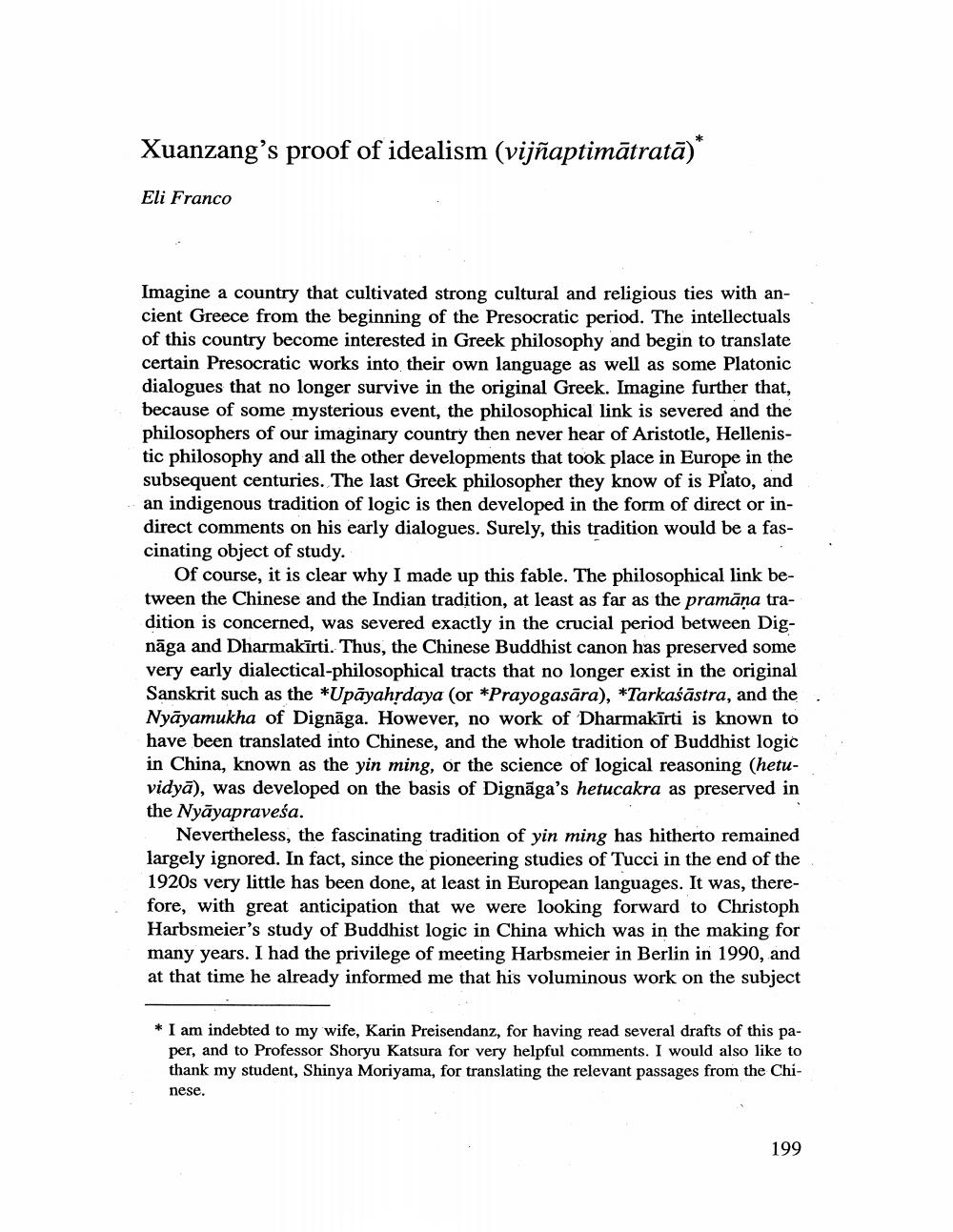________________
Xuanzang's proof of idealism (vijñaptimātratā)* Eli Franco
Imagine a country that cultivated strong cultural and religious ties with ancient Greece from the beginning of the Presocratic period. The intellectuals of this country become interested in Greek philosophy and begin to translate certain Presocratic works into their own language as well as some Platonic dialogues that no longer survive in the original Greek. Imagine further that, because of some mysterious event, the philosophical link is severed and the philosophers of our imaginary country then never hear of Aristotle, Hellenistic philosophy and all the other developments that took place in Europe in the subsequent centuries. The last Greek philosopher they know of is Plato, and an indigenous tradition of logic is then developed in the form of direct or indirect comments on his early dialogues. Surely, this tradition would be a fascinating object of study.
Of course, it is clear why I made up this fable. The philosophical link between the Chinese and the Indian tradition, at least as far as the pramāņa tradition is concerned, was severed exactly in the crucial period between Dignāga and Dharmakīrti. Thus, the Chinese Buddhist canon has preserved some very early dialectical-philosophical tracts that no longer exist in the original Sanskrit such as the *Upāyahrdaya (or *Prayogasāra), *Tarkaśāstra, and the Nyāyamukha of Dignāga. However, no work of Dharmakīrti is known to have been translated into Chinese, and the whole tradition of Buddhist logic in China, known as the yin ming, or the science of logical reasoning (hetuvidyā), was developed on the basis of Dignāga's hetucakra as preserved in the Nyāyapraveśa.
Nevertheless, the fascinating tradition of yin ming has hitherto remained largely ignored. In fact, since the pioneering studies of Tucci in the end of the 1920s very little has been done, at least in European languages. It was, therefore, with great anticipation that we were looking forward to Christoph Harbsmeier's study of Buddhist logic in China which was in the making for many years. I had the privilege of meeting Harbsmeier in Berlin in 1990, and at that time he already informed me that his voluminous work on the subject
* I am indebted to my wife, Karin Preisendanz, for having read several drafts of this pa
per, and to Professor Shoryu Katsura for very helpful comments. I would also like to thank my student, Shinya Moriyama, for translating the relevant passages from the Chi
nese.
199




